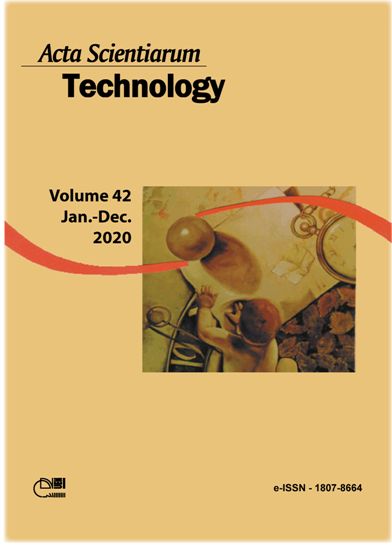Simulation-based analysis of AGV workload used on aircraft manufacturing system: a theoretical approach
DOI:
https://doi.org/10.4025/actascitechnol.v42i1.47034Palavras-chave:
AGV, aircraft manufacturing, industry 4.0, simulation, industrial processResumo
competitiveness in the aircraft manufacturing industry requires continuous improvement and modernization of its manufacturing processes, in order to keep the companies competitive in the market. In this context, the use of advanced manufacturing technologies and systems has been incessantly pursued to achieve productivity gains, sustainability and reduction of production costs, as well as being important in the individuals´ quality of life. Autonomous robotic systems such as Automated Guided Vehicles (AGVs) have been used on shop floor to assist the aggregation of these competitive advantages to the business. Coupled to the use of these vehicles, other technologies such as the internet, digital factory and cloud-computing have been integrated into manufacturing in direction of the so-called advanced manufacturing, or Industry 4.0. Thus, this work aims to apply the concepts of digital factory in an example of aircraft manufacturing system, to analyze the efficiency and workload of the AGVs that transport materials from the warehouse to the assembly stations. Based on a theoretical approach by discrete-event simulation method and guided by the principles of Industry 4.0, analysis related to needed amount of AGVs, cycle times, deliveries and downtime of the vehicles were performed for different situations. Thus, it searches for better results in terms of productivity and decision-making support regarding adding-value related to materials transporting and information over long distances, delays, waiting and unnecessary movement of workers, in order to obtain improvement and profits for the aircraft manufacturing system.
Downloads
Downloads
Publicado
Como Citar
Edição
Seção
Licença
DECLARAÇíO DE ORIGINALIDADE E DIREITOS AUTORAIS
Declaro que o presente artigo é original, não tendo sido submetido í publicação em qualquer outro periódico nacional ou internacional, quer seja em parte ou em sua totalidade.
Os direitos autorais pertencem exclusivamente aos autores. Os direitos de licenciamento utilizados pelo periódico é a licença Creative Commons Attribution 4.0 (CC BY 4.0): são permitidos o compartilhamento (cópia e distribuição do material em qualqer meio ou formato) e adaptação (remix, transformação e criação de material a partir do conteúdo assim licenciado para quaisquer fins, inclusive comerciais.
Recomenda-se a leitura desse link para maiores informações sobre o tema: fornecimento de créditos e referências de forma correta, entre outros detalhes cruciais para uso adequado do material licenciado.















